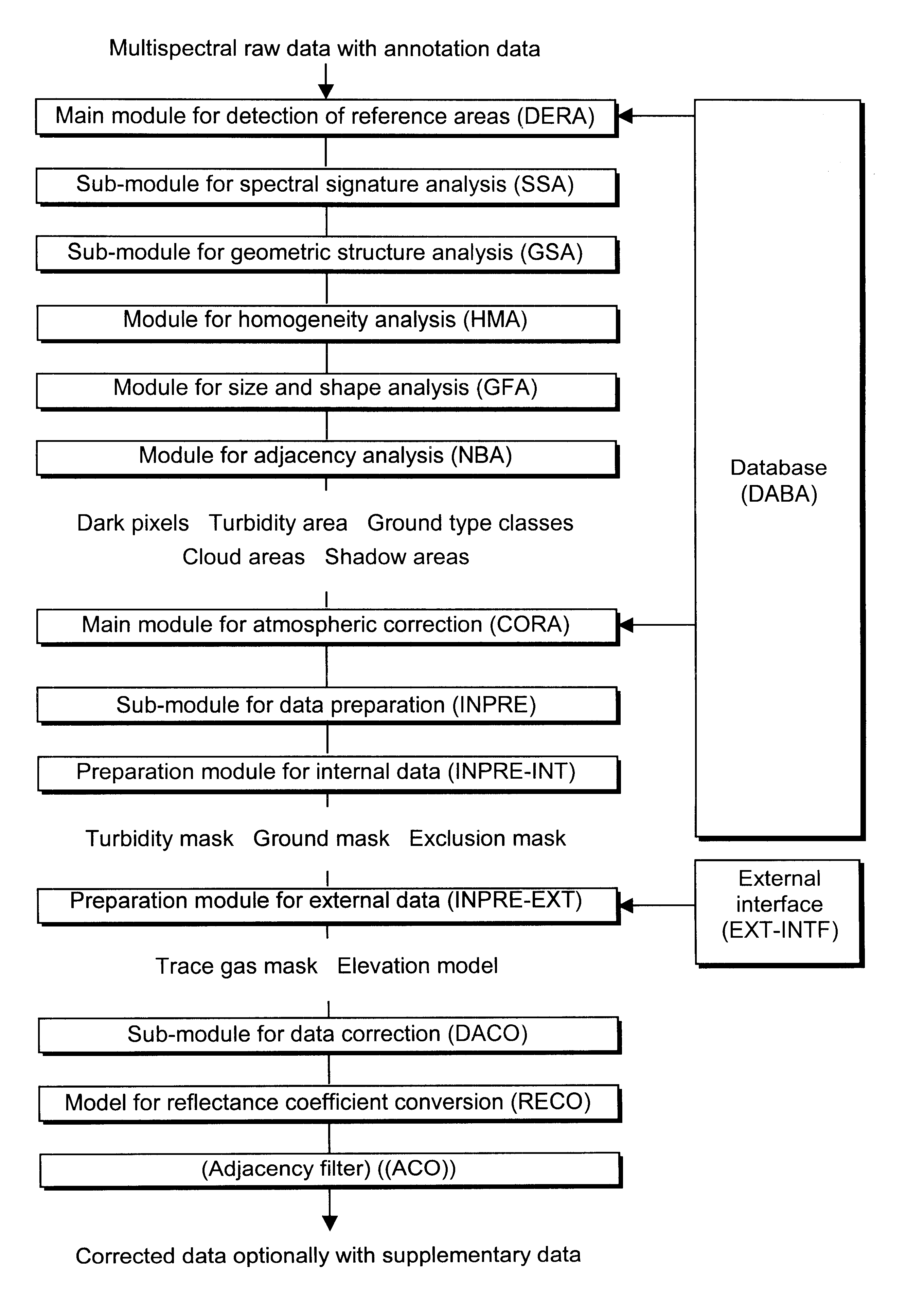Process for correcting atmospheric influences in multispectral optical remote sensing data
a multi-spectral optical and remote sensing data technology, applied in image enhancement, scene recognition, instruments, etc., can solve the problems of inability to use automatic atmospheric correction of remotely sensed data, inability to automatically identify validation areas, and inability to routine automatic processing of multi-spectral remote sensing data from a wide variety of sensors, etc., to achieve precise correction calculation, good time-space correlation of atmospheric data, inventive process fast
- Summary
- Abstract
- Description
- Claims
- Application Information
AI Technical Summary
Benefits of technology
Problems solved by technology
Method used
Image
Examples
Embodiment Construction
The process shown in the FIGURE for an automatic atmospheric correction according to the invention consists of two different partial processes, which are combined as main modules DERA and CORA. The main module DERA ("Detection of Reference Areas") is used for the detection and identification of dark areas and areas of significant spectral behavior in the remotely sensed data, and the main module CORA ("Correction of Atmosphere") is used for the atmospheric correction of the remotely sensed data. Both main modules DERA and CORA access a database DABA with stored methods and parameters. The process provides the result in the form of a pixel image of the atmosphere-corrected ground reflectance with incorporated supplementary atmospheric data, anisotropic reflectance characteristics of different ground type classes, and terrain elevation. Data from different sensors with different geometric and / or spectral resolutions can be read in as raw data and processed.
The main module DERA consist...
PUM
 Login to View More
Login to View More Abstract
Description
Claims
Application Information
 Login to View More
Login to View More - R&D
- Intellectual Property
- Life Sciences
- Materials
- Tech Scout
- Unparalleled Data Quality
- Higher Quality Content
- 60% Fewer Hallucinations
Browse by: Latest US Patents, China's latest patents, Technical Efficacy Thesaurus, Application Domain, Technology Topic, Popular Technical Reports.
© 2025 PatSnap. All rights reserved.Legal|Privacy policy|Modern Slavery Act Transparency Statement|Sitemap|About US| Contact US: help@patsnap.com


